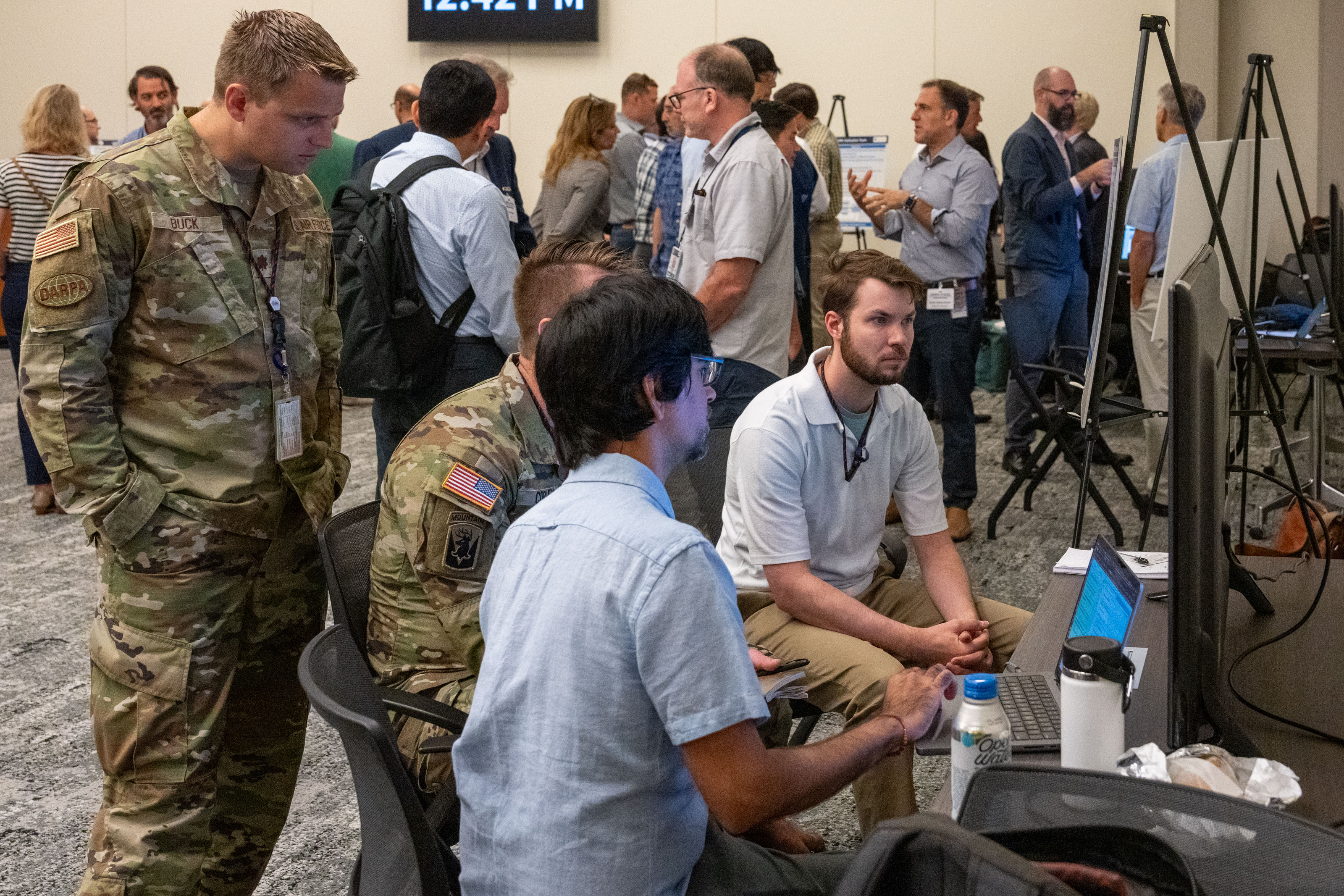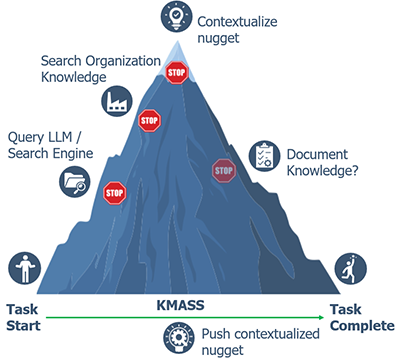Novel tools automatically capture and effectively disseminate workflow knowledge

Aug 25, 2025
Asking a chatbot for help on any number of issues has become part of daily life for many. But today’s query-based AI tools built on large language models (LLMs) are limited to responding to questions users ask.
These tools can pull queried info from a database, but they can’t automatically push insightful and contextualized knowledge to help a user complete a task without being asked.
DARPA’s Knowledge Management at Scale and Speed (KMASS) program, which kicked off in 2022 and recently held its final principal investigator meeting, has developed a variety of new tools that can automatically ingest knowledge sources and disseminate specific “nuggets” of info relevant to a workflow — whether the user requests the knowledge or not — exactly when needed, while avoiding irrelevant or already known information. This personalized knowledge sharing concept is a core tenet of KMASS referred to as “JustINs” — i.e., just in time, just enough, and just for me.1
Knowledge gaps created by frequent military turnover
A challenge for the military, whose members change duty stations and deploy regularly, is ensuring efficient and effective knowledge handover during transitions.
Currently, the transfer of key organizational task information and understanding of unique local issues is largely ad hoc: onboarding briefings, “right-seat/left-seat” mission rides, conversations, knowledge management (KM) databases, lessons learned reports, turnover folders, emails, and even handwritten notes – all of which require time-consuming manual collection, maintenance, and dissemination that are prone to gaps. And when someone who’s been with an organization for years or decades retires, a treasure trove of local organizational knowledge and best practices is lost.
KMASS aims to prevent vital knowledge from falling through the cracks or being filed away where no one knows to look for it. KMASS research teams and commercial companies over the past several years have developed underlying technologies to effectively organize, preserve, and manage background knowledge at the “nugget” level; seamlessly capture new local knowledge in real time as part of regular workflows (i.e., no extra documentation step required from the user); and disseminate contextualized knowledge in an easily understood format that is useful, appropriate, and on time.
Don’t make me ask…
“Using LLMs is like casting a magical spell; you need to find the right words to get the model to do what you want. Popular LLMs give you a haystack of info to search through when you ask a question, whereas KMASS will push the needle in the haystack to you as you’re working on a task, even if you don’t know the right question to ask,” said Matthew Marge, a leading AI expert at DARPA and KMASS program manager. “KMASS overcomes the input/output knowledge bottleneck, which occurs when knowledge producers don’t have easy ways to document knowledge and knowledge consumers don’t have easy ways to get at that knowledge."
Most commonly, when people start a task that requires some nuanced organizational knowledge to complete, they begin by querying a search engine or LLM, then search local organizational knowledge databases, then hopefully glean some applicable nugget of knowledge from these searches, and, finally — if they remember to — document what was learned and store it in a place where people will know to find it later.
“KMASS eliminates all these middle steps and takes a user straight from task start to task completion by automatically pushing the appropriate contextualized knowledge nugget needed,” Marge said.
Most commercial LLMs are geared toward novices, whereas KMASS is aimed at military and technical experts who need domain-specific, locally contextualized, timely knowledge that a general LLM can’t provide. LLMs also don’t explicitly capture new knowledge, which is a key element of KMASS.
“Delivering the right knowledge at the right time requires context,” said Robert Lazar, a DARPA technical advisor to the program since its inception. “The dissemination challenge is intrinsically linked to the capture challenge; Context links knowledge from the knowledge producer to the knowledge consumer, which is the key to helping people who don’t know what they don’t know get their knowledge nugget.”
Three KMASS research teams, two KMASS-related small business innovation research (SBIR) teams, and one independent verification and validation (IV&V) team recently demonstrated their systems at DARPA to representatives from DOD and other government organizations to spur further KM tech development and speed adoption across the DOD and U.S. government.
Since KMASS was a fundamental research effort, the teams demonstrated their tools on easily accessible data in the following domains: Oil and gas; analysis; university management; civilian aviation; contract management (other transactions – OTs); and document understanding.
[1] Rosenberg, M. J. (2001). E-learning: Strategies for delivering knowledge in the digital age. New York: McGraw-Hill
KMASS teams and their demos

